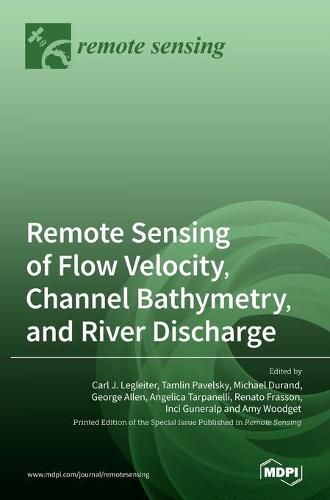Readings Newsletter
Become a Readings Member to make your shopping experience even easier.
Sign in or sign up for free!
You’re not far away from qualifying for FREE standard shipping within Australia
You’ve qualified for FREE standard shipping within Australia
The cart is loading…






This title is printed to order. This book may have been self-published. If so, we cannot guarantee the quality of the content. In the main most books will have gone through the editing process however some may not. We therefore suggest that you be aware of this before ordering this book. If in doubt check either the author or publisher’s details as we are unable to accept any returns unless they are faulty. Please contact us if you have any questions.
River discharge is a fundamental hydrologic quantity that summarizes how a watershed transforms the input of precipitation into output as channelized streamflow. Accurate discharge measurements are critical for a range of applications including water supply, navigation, recreation, management of in-stream habitat, and the prediction and monitoring of floods and droughts. However, the traditional stream gage networks that provide such data are sparse and declining. Remote sensing represents an appealing alternative for obtaining streamflow information. Potential advantages include greater efficiency, expanded coverage, increased measurement frequency, lower cost and reduced risk to field personnel. In addition, remote sensing provides opportunities to examine long river segments with continuous coverage and high spatial resolution. To realize these benefits, research must focus on the remote measurement of flow velocity, channel geometry and their product: river discharge. This Special Issue fostered the development of novel methods for retrieving discharge and its components, and thus stimulated progress toward an operational capacity for streamflow monitoring. The papers herein address all aspects of the remote measurement of streamflow-estimation of flow velocity, bathymetry (water depth), and discharge-from various types of remotely sensed data acquired from a range of platforms: manned and unmanned aircraft, satellites, and ground-based non-contact sensors.
$9.00 standard shipping within Australia
FREE standard shipping within Australia for orders over $100.00
Express & International shipping calculated at checkout
This title is printed to order. This book may have been self-published. If so, we cannot guarantee the quality of the content. In the main most books will have gone through the editing process however some may not. We therefore suggest that you be aware of this before ordering this book. If in doubt check either the author or publisher’s details as we are unable to accept any returns unless they are faulty. Please contact us if you have any questions.
River discharge is a fundamental hydrologic quantity that summarizes how a watershed transforms the input of precipitation into output as channelized streamflow. Accurate discharge measurements are critical for a range of applications including water supply, navigation, recreation, management of in-stream habitat, and the prediction and monitoring of floods and droughts. However, the traditional stream gage networks that provide such data are sparse and declining. Remote sensing represents an appealing alternative for obtaining streamflow information. Potential advantages include greater efficiency, expanded coverage, increased measurement frequency, lower cost and reduced risk to field personnel. In addition, remote sensing provides opportunities to examine long river segments with continuous coverage and high spatial resolution. To realize these benefits, research must focus on the remote measurement of flow velocity, channel geometry and their product: river discharge. This Special Issue fostered the development of novel methods for retrieving discharge and its components, and thus stimulated progress toward an operational capacity for streamflow monitoring. The papers herein address all aspects of the remote measurement of streamflow-estimation of flow velocity, bathymetry (water depth), and discharge-from various types of remotely sensed data acquired from a range of platforms: manned and unmanned aircraft, satellites, and ground-based non-contact sensors.